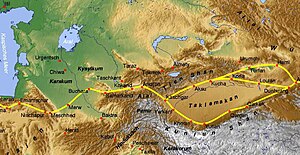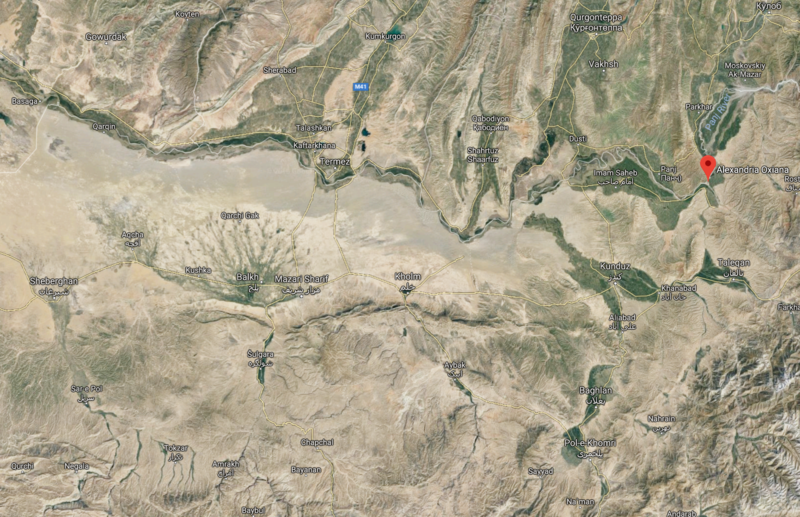Greco-Bactria:Assets
| Greco-Bactria | |||||
| Features | Assets | Timeline | Plan | Notes | Ideas |
It's not all doom and gloom. Bactria and Sogdia have some good things going for it, which is why the land was previously (before Alexander's conquest) always given to the current heir of the Achaemenid Persian empire. (need source)
Wealth
Bactria and Sogdia are actually quite wealthy, despite being so remote and in such a harsh land. This is mainly due to the fact that it has a lot of trade between East and West, since it is part of the Silk road. On a side-note, trade was typically done from one end of a country to the other, not from one end of the silk road to the other. Presumably this was done for safety. Hence it would seem better, for the merchant at least, to control as long a part of the silk road as possible.
Bactria also known for its deposits of Lapiz Lazuli (provide source).
Additionally, there are untapped natural resources. It is estimated that there are 60 deposits of dimension stone in modern-day Afghanistan. Limestone and travertine deposits are close to the capital city of Balkh, and marble is available around modern-day Kabul (which would likely be too cost prohibitive to transport).
Military
30,000 Greek mercenaries were initially stationed around Bactria and Sogdia! (need source)
Only 14,000 are left after your father was supposed to campaign North to clean out the unruly natives. Note however that these very same mercenaries (and many of the Greek farmers) are not here by choice, and would prefer to return back to Greece. The mercenaries might have been part of the very same Greek insurgents that attempted to depart in BC 325 and BC 323.
Hence one of the early goals will be to convince some of the native leaders to lend their military forces.
Population
Bactria
It's known as the land of a thousand towns, and it did have rich arable land due to the alluvial plains, but the population seems fairly modest.
Known settlements as of the time of the Greco-Bactrian empire and before:
- Bactra / Balkh: The capital. See my math elsewhere about it having a population of about 55,000 supporting it, and hence a population of up to 10,000. Important center of Zoroastrianism worship.
- Alexandria Oxiana / Ai-Khanoum: Founded by Alexander the Great, so initially expected to be small. Has a decent amount of irrigated land around it though.
- Kunduz / Drapsaca: One of the major cities with lots of irrigated land around it. Alexander the Great passes through this city in his conquest of the Bactria region.
- Surhk Kotal: Has a good amount of irrigated land.
- Tilia Tepe: Smaller outlying town, but also the furthest West and the first settlement that traders (and conquerors) would normally encounter.
The following might be part of Bactria as well:
- Alexandria in the Caucasus: Founded by Alexander.
- Begram
- Kabul: capital of modern-day Afghanistan
Note that modern-day Mazari Sharif did not exist back then. It was actually created because Bactra/Balkh was suffering so much from diseases that the ruler moved the people to a place that wouldn't suffer from the annual flooding and the rampant hygiene problems.
Sogdia
- Termez: ...
- Samarkand: ...
Modern-Day Satellite Image of Bactria:


